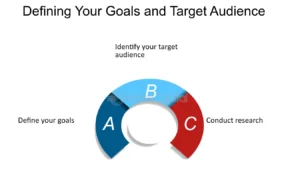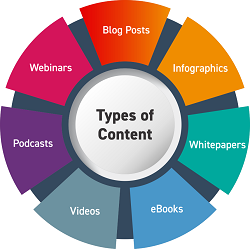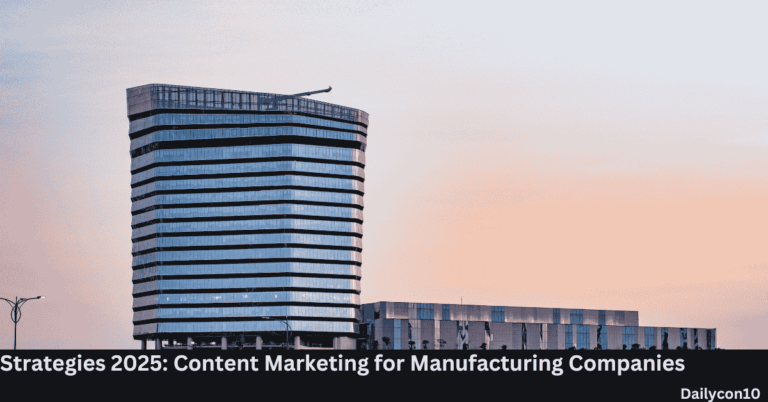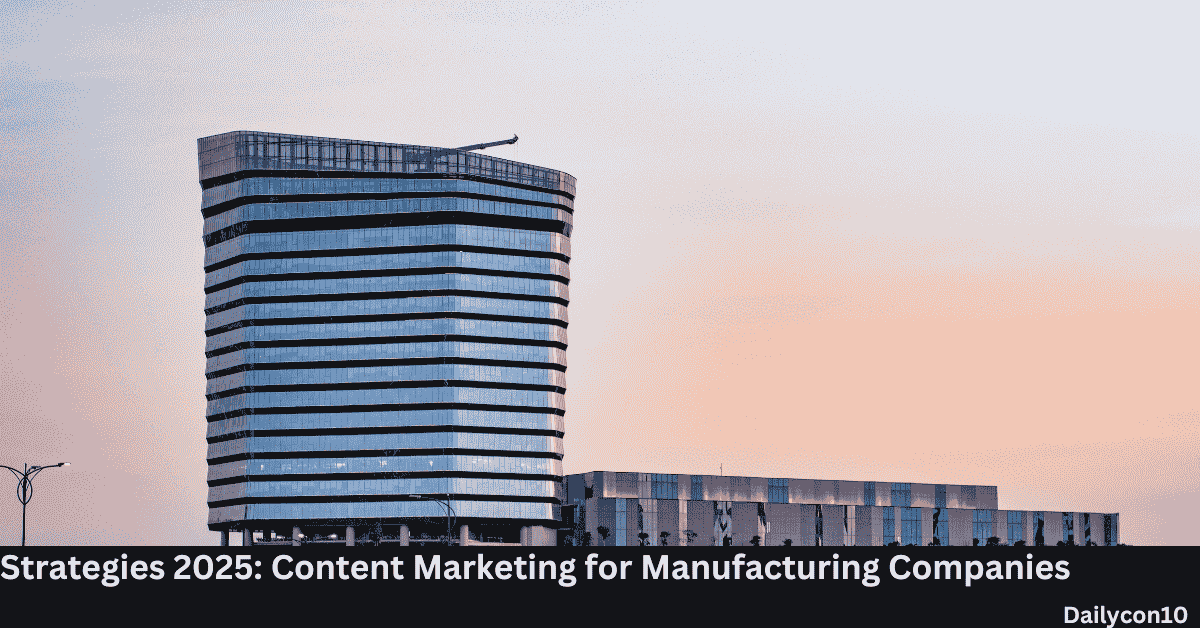Content marketing for manufacturing companies is no longer just for tech giants or retail brands; it is now a game changer for manufacturing companies as well! With long sales cycles, complex products, and astute buyers, manufacturers have a goldmine of opportunities to boost growth through compelling content. But How do you get started?
Whether you’re a marketer in the manufacturing world or a manufacturer aiming to elevate your brand, this guide will walk you through crafting a tailor-made content marketing strategy for your industry.
What is Content Marketing in Manufacturing Companies in Simple Words?
Short Brief About It: Content marketing is all about crafting and sharing valuable, relevant content to draw in and connect with your target audience. While it’s often linked to blog posts, social media, and videos, its application in manufacturing brings unique opportunities. For manufacturers, it’s about delivering the right content to help customers:
- Grasp the intricacies of complex technical products.
- Build trust in your expertise within a fiercely competitive industry.
- Discover solutions tailored to their unique challenges.
With the right approach, content marketing can transform how manufacturers engage with their customers, turning complexity into clarity and opportunities into connections.
Why Does Content Marketing Matter for Manufacturing Companies?
In the past, manufacturers leaned on trade shows, cold calls, and distributors to reel in leads. While these methods still have their place, they’re just not cutting it in today’s digital-first buying world.
Did you know that 77% of B2B buyers do their research online before even reaching out to a sales rep? That’s why a killer content marketing strategy is a game-changer. It not only boosts your online visibility but also educates potential customers and keeps you ahead of the competition.
Here’s what high-quality, informative content can do for you:
- Build credibility in your niche and stand out as an industry leader.
- Drive high-quality leads right to your doorstep, or in this case, your website.
- Shorten sales cycles by answering customers’ burning questions upfront.
- Strengthen relationships with your existing customers through valuable post-sale content.
How to Identify Your Target Audience and Goals
Like any marketing effort, successful content marketing starts with understanding your audience and defining clear goals. Here’s how to do it:

1. Pinpoint Your Target Audience
Your ideal customers are the decision-makers: the procurement managers, engineers, or C-suite executives calling the shots. Picture their world:
- What industry challenges are keeping them up at night?
- What burning questions do they have on their buyer’s journey?
- Which digital hangouts are they frequenting for research?
Dive into tools like buyer personas to uncover their preferences, pain points, and decision-making styles.
2. Define Your Goals
What triumphs do you want your content to achieve? Envision objectives like:
- Skyrocketing web traffic.
- Generating leads that are not just plentiful but golden.
- Enlightening prospects about your standout product or service.
- Carving out a niche as a thought leader.
- Boosting customer engagement and loyalty.
Set goals that you can measure and celebrate, like gaining 500 fresh newsletter subscribers in six months or bumping your website’s organic traffic by an exciting 20%.
Content Creation Strategies for Manufacturers
When creating content for the manufacturing sector, aim for both practicality and excitement.
Here’s how you can do it:
1. Leverage Technical Knowledge
Manufacturers possess a wealth of deep technical expertise; use it to your advantage!
Create engaging content like:
- How-to guides that solve real-world customer challenges.
- Technical whitepapers that dive into product innovations.
- Case studies that spotlight success stories and the impact of your solutions.
2. Humanize Your Brand
Even the most technical processes can connect on a human level. Use storytelling to make your brand image relatable.
- Share captivating stories about your team or your company’s journey.
- Highlight how your products make a real difference in people’s lives and industries.
- Celebrate milestones that showcase growth and achievements.
3. Optimize for SEO
Make sure your content gets seen! SEO is key to reaching your audience. Dive into keyword research to uncover terms like “custom metal fabrication tips” or “best industrial machinery solutions.” Build content like blog posts, FAQs, and product pages around these keywords.
4. Experiment with Visual Content
Bring manufacturing to life with visuals! Videos, diagrams, and infographics can make complex processes and products both clear and captivating. Try out:
- Behind-the-scenes plant tour videos.
- Animated breakdowns of how your machinery works.
- Interactive infographics that highlight industry trends.
By blending technical expertise with engaging storytelling and visuals, you’ll capture attention and build stronger connections in the manufacturing arena.
Types of Content Manufacturing Companies Should Use
There are Lots of types of great content Creating is just the beginning you also need to get it in front of the right audience.
Here’s how manufacturers can take their content to the next level

1. LinkedIn
LinkedIn is your go-to for B2B marketing magic. Share blog posts, whitepapers, and thought leadership pieces while mingling with industry professionals. It’s where connections and opportunities happen!
2. Email Marketing
Keep your prospects and customers hooked with compelling email content:
- Send out monthly newsletters packed with industry insights that they can’t resist.
- Offer personalized product recommendations that feel like they were made just for them.
- Get them excited with event invitations or product launch announcements!
3. Your Website and Blog
Your website is your digital HQ. Make sure it’s SEO-ready and packed with a blog full of high-value content. Keep it fresh and interesting to keep them coming back for more.
4. Trade Publications and Industry Forums
Expand your reach by partnering with trade journals and forums. These platforms are gold mines with an audience already keen on manufacturing solutions.
5. Social Media Platforms
Don’t overlook the power of social media to amplify your content beyond traditional professional channels. Platforms like Twitter, Facebook, and Instagram can help you engage with a broader audience.
- Twitter: Use this fast-paced platform for sharing quick updates, industry news, and real-time engagement during events or live Q&As.
- Facebook: Create a business page to connect with community groups, share behind-the-scenes content, or hold live sessions to engage directly with your audience.
- Instagram: Visuals are king on Instagram. Post eye-catching images and stories that highlight your product’s journey from production to application.
6. Infographics
Condense complex data into user-friendly infographics. For example, a visual breakdown of energy savings through eco-efficient manufacturing can quickly highlight your solutions’ value.
7. Whitepapers and eBooks
When targeting highly technical teams, whitepapers and eBooks serve as in-depth resources. These long-form content pieces are an excellent way to showcase specialized knowledge.
8. YouTube
As a video-centric platform, YouTube offers manufacturers the chance to educate and inspire through rich visual content. Consider these options:
- Product Demonstrations: Show the versatility and capabilities of your products in action.
- Tutorials: Develop step-by-step guides that help demystify technical processes for your audience.
- Customer Testimonials: Let satisfied customers share their successes, providing authentic insights and building trust with prospects.
9. Podcasts
Podcasts are gaining traction as a preferred medium for consuming content. Leverage this trend by launching a series that dives deep into industry-specific topics, methodologies, and innovations:
- Hosting discussions with industry leaders or internal experts to share valuable insights.
- Break down technical topics into accessible conversations that educate and intrigue your listeners.
The Success of Your Content Marketing Efforts
To make sure your content marketing strategy hits the mark, keep an eye on these crucial KPIs:
- Website Traffic: Watch your website traffic grow with tools like Google Analytics. Each visit could be a potential customer!
- Lead Generation: Count the leads from your content offers, whether a gated whitepaper or a webinar sign-up. Every lead is a new opportunity knocking at your door.
- Engagement Metrics: Look for likes, comments, and shares on your social posts or see how long visitors stay on your content pages. Engagement means your audience cares about what you’re saying.
- Conversion Rates: Measure how well your content is turning interest into action, like demo requests or direct purchases.
- Audience Growth: Monitor changes in follower counts, subscriber lists, and email opt-ins to ensure continued expansion.
Case Studies of Content Marketing
1. Company A’s Technical Blog Series
A mid-sized machinery manufacturer launched a blog series covering engineering trends, resulting in a 45% traffic boost and a 20% increase in inbound leads.
2. Company B’s Explainer Videos
An industrial automation company created step-by-step product tutorials for its YouTube channel, which attracted 1,500 new monthly channel subscribers.
These examples show the tangible benefits of investing in content marketing.
Conclusion :
Content marketing in the manufacturing industry is evolving to match the digital-first world. It’s about creating valuable content that captures attention and builds relationships with your audience. Reach decision-makers through effective email campaigns, LinkedIn ads, and SEO strategies that enhance visibility. Success is measured by increased website traffic, higher engagement rates, and lead conversions. With AI-driven personalization and immersive technologies, manufacturers are finding new ways to captivate and inform their audience. The future of content marketing in manufacturing is about leading with innovation.
Q1: What is marketing in manufacturing?
Marketing in manufacturing focuses on understanding customer needs, creating strong value propositions, and enhancing brand visibility to boost sales. It combines creativity and strategy to highlight products in the marketplace.
Q2: What is content marketing and its types?
Choosing the right content depends on knowing your audience and purpose. Opt for engaging, informative, and visually impressive content whether articles, videos, or interactive media. This kind of content truly connects and leaves a lasting impact!
Q3: What is a manufacturer’s brand in marketing?
A manufacturer’s brand is more than just a label; it’s a promise crafted by producers to represent their goods in the market. It assures quality, builds consumer trust, and sets their products apart from the competition.
Q4: How to market and sell to manufacturers?
Understand manufacturers’ needs, focus on cost-effectiveness, and highlight product benefits. Build strong relationships through clear communication, tailored solutions, and regular follow-ups to secure long-term partnerships and successful sales.
Q5: How is marketing used in manufacturing?
Marketing in the manufacturing industry means highlighting exceptional product quality, crafting a strong brand reputation, and leveraging digital platforms to connect with your target audience. It’s all about boosting demand and building lasting relationships with customers.


